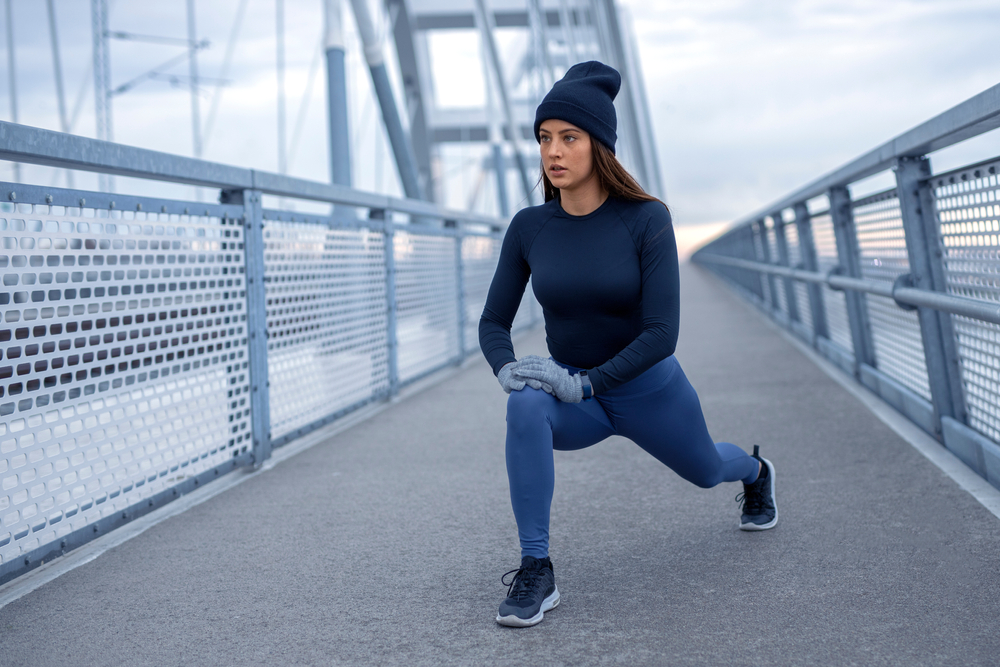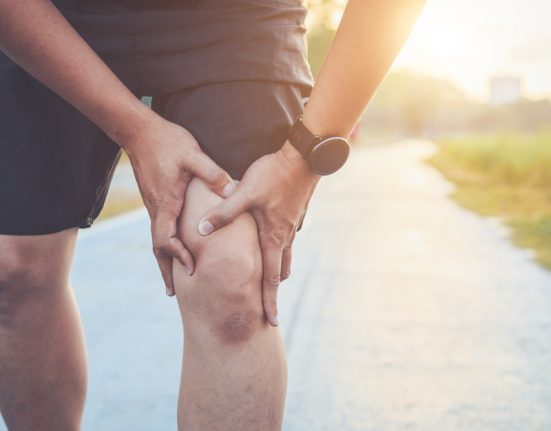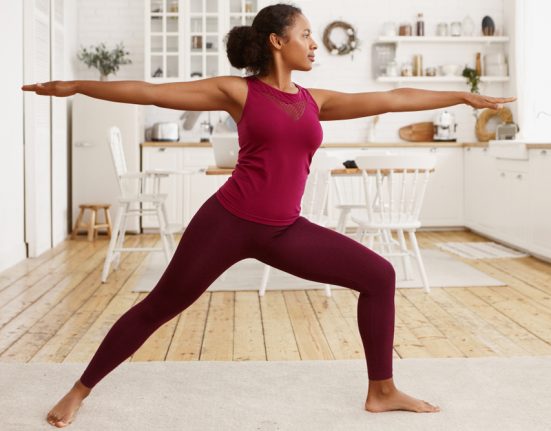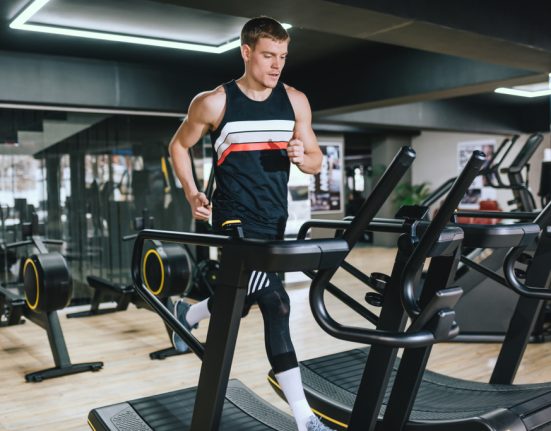These expert tips will have you ditching your living room sweat sesh and embracing the great outdoors this winter.
Whether you spend a day hiking the mountain trails or an hour enjoying a brisk run around your snow-covered neighborhood, winter exercise in the great outdoors can transform your mood and mind.
“We’ve found that people who saw winter as full of opportunity and not a limiting time of year experienced greater well-being: They had more positive emotions, greater life satisfaction, and greater personal growth,” says Kari Leibowitz, Ph.D., a health psychologist at Stanford who studied the mental benefits of embracing winter in Norway.
Leibowitz’s advice to reap this winter workout benefit — and a handful of others? Prove to yourself you can bundle up and have a good time outside to get a habit going. Here, the other perks of chilly sweat seshes, plus how to get them without freezing your tush off.
The Health Benefits of Outdoor Winter Exercise
The mere act of chilly exercise spurs the body to release the exercise hormone irisin, which increases fat burning while positively enhancing activity in the brain’s reward system. “Being active safely in the cold combines two triggers for the release of irisin, exercise and shivering. The muscle contraction of both causes this,” says psychologist Kelly McGonigal, Ph.D., the author of The Joy of Movement. “It’s safe to assume that an outdoor workout — like a 20-minute run or an outdoor boot camp class — is sufficient to benefit.” And when your irisin levels are elevated, your motivation increases too.
Your body also has a mechanism for warming up your core by converting regular body fat — which is inactive — into what’s called brown fat, which is metabolically active and actually burns calories. “Cold-induced activation of brown adipose tissue can occur within two hours of cold exposure,” says Robert H. Coker, Ph.D., a research professor at the University of Montana. (Experts can’t pinpoint whether the lower the temp, the quicker the effect is ignited in that time frame.)
Plus activation of that brown fat will remain elevated for at least one hour after you come back from that winter hike or ski session. The net effect is a 5 percent uptick in your total calorie burn for the day. Meanwhile, in a study published in the International Journal of Environmental Research and Public Health, the combination of cold exposure (a little below freezing) and exercise was found to promote an increase in a certain protein (known as PGC-1-alpha). This helps improve fat oxidation and protect against obesity — after one outing. “We might be able to ‘build up’ PGC-1-alpha over time with regard to cold exposure,” says Coker. “It remains to be seen.” Still, your winter exercise habit will do you good on each outing.
Not to mention, winter is the ideal climate to build stamina. “I always prefer cold over heat for training,” says elite runner Mary Cain, the New York community manager for the Tracksmith brand. “The heat limits the maximum you can do, but fall and winter are a chance to embrace trying longer distances.” So if your typical run or ride or hike is 30 minutes, build that to 40 or 50 minutes. “They might feel a little better in the cold,” says Cain.
And when it’s snow time, let the switch in your usual terrain inspire — rather than deter — you. “I change things up in winter with snowshoeing,” says Mirna Valerio, an ultrarunner and Merrell athlete who lives in Vermont. “You’re still moving forward, but your body has to work harder to walk — or run if you’re using running snowshoes — through the texture and weight of snow.”
How to Ease Into the Chill
Your perception of temperature and how comfortable it feels outside comes from the sensation on your skin. When you hit cold air, your blood vessels constrict in your extremities to try to reduce the amount of heat that you lose to the environment, says John Castellani, Ph.D., a physiologist with the U.S. Army Research Institute of Environmental Medicine. “As you repeatedly get exposed to the cold by making a habit of being outdoors, that constriction response is blunted, which means essentially you might get more blood flow and higher skin temperatures at that same air temperature,” says Castellani. Translation: The more often you head out for a winter exercise session, the more comfortable it gets and you will become habituated to the cold quicker than those whose only dose is the five-minute dash from door to driveway.
Even if you’re a cold-weather veteran, you’ll want to prep your body for a winter workout by doing some dynamic stretches or other warm-ups when you’re still indoors to get a little body heat going. That way, you’ll be ready for action the minute you step outside. And to hedge against having to stop and do a long, cold walk home, make your winter workout an out-and-back, says Castellani. “If you usually do four miles, do a mile out and back a couple of times instead,” he says.
Bottom Line
Running in cold weather requires more careful preparation and an investment in the right gear to keep you warm, but once you get in a routine you’ll likely find that it feels great and you look forward to getting outside. The pros like a boost in mood and metabolism ultimately outweigh the cons.









